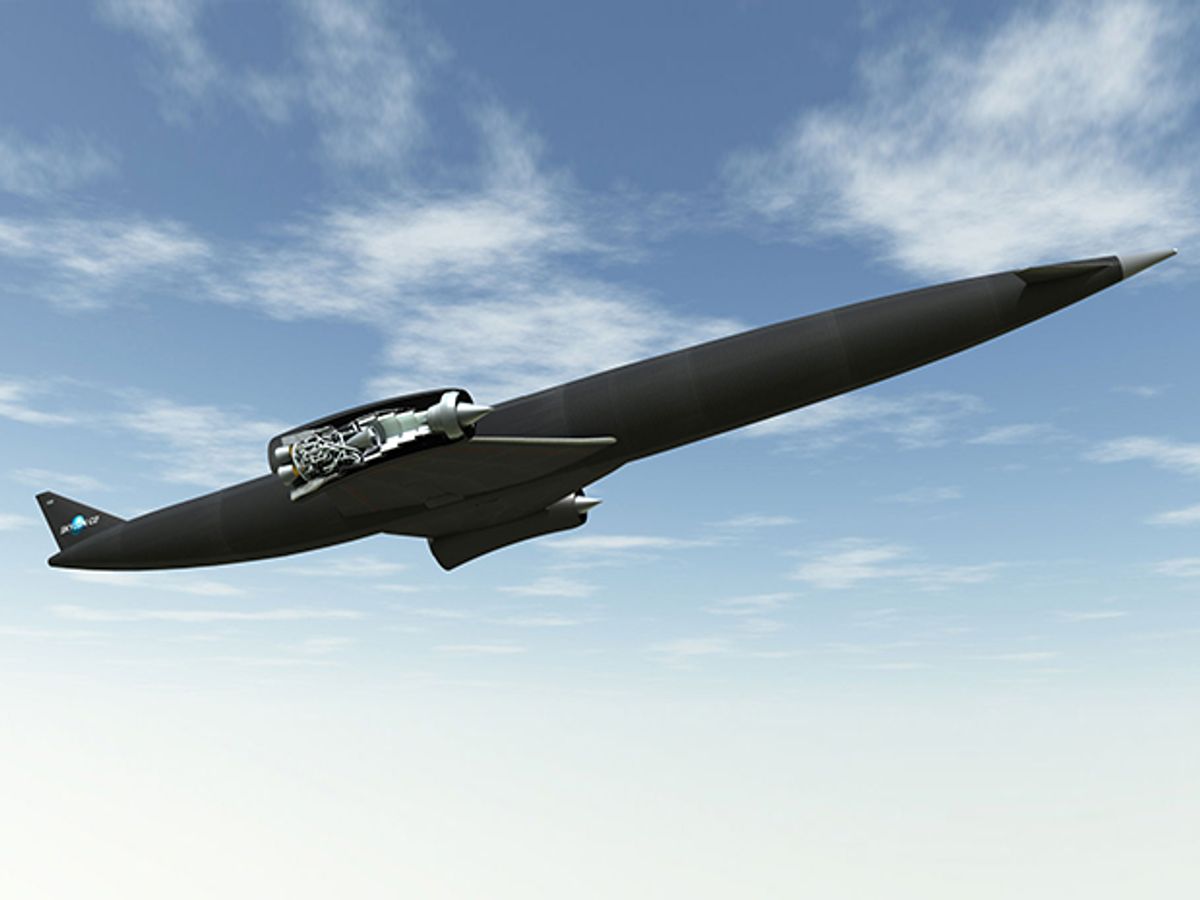Part of the reason that getting to space is so stupendously expensive is that we go about it very inefficiently. We use rockets, which spend the vast majority of their thrust to lift their own fuel and oxidizer—neither of which we care very much about, at least not as far as the end product of getting mass into orbit is concerned. Airplanes, on the other hand, are very efficient, because they take advantage of air, which helpfully provides both lift and as much oxidizer as an engine can suck down.
For the last quarter century or so, a British company called Reaction Engines has been making slow, steady progress toward a hybrid system that has the potential to bind aircraft and spacecraft together. Reaction’s Synergetic Air-Breathing Rocket Engine (SABRE) could power a safe, efficient, and very cool looking single-stage-to-orbit vehicle. It's an enormous technical challenge, but one that may now be realistically solvable thanks to massive new investment from BAE Systems and the British government. BAE just ponied up £20.6 million for a 20-percent stake in the company. And with £60 million in grants coming from the UK government, the company thinks it should have the resources it needs to stage a full-scale ground test of SABRE by 2020, and unmanned test flights around 2025.
Space planes are an as-yet-hypothetical attempt to build something that behaves like an airplane while air is available (efficiently lifting itself to the edge of the atmosphere with wings and air-breathing engines), then resorting to rockets for the last push into orbit only when necessary. This dual-mode approach could potentially make access to space orders of magnitude more efficient and reliable. But developing an engine that can operate at the range of speeds, altitudes, and temperatures necessary to make a single-stage-to-orbit (SSTO) space plane a reality has so far proved to be too much of a challenge. You'd need an engine that can provide effective thrust between the moment of liftoff and Mach 25. Then the vehicle would have to make a seamless transition from breathing ambient oxygen to drinking liquid oxygen as it climbed out of the atmosphere.
The SABRE rocket engine can use atmospheric air as an oxidizer at speeds of up to Mach 5.5 and altitudes as high as 25 kilometers. This accounts for about 20 percent of the total orbital speed and altitude needed to leave Earth; using air to get to this point means that SABRE doesn't need 250 tons of oxidizer that it would otherwise have to carry if it operated like a traditional rocket engine. Beyond speeds of Mach 5.5, SABRE starts to become inefficient, so the incoming air is replaced with liquid oxygen from onboard tanks.
The reason that nobody has gotten this to work is that, as the speed of the vehicle increases, the air that its engine ingests heats up due to compression—so much so that the innards of the engine start to melt. SABRE solves this by cooling incoming air from 1,000 degrees Celsius to -150 °C in a hundredth of a second. It does this by pumping liquid helium through a fine array of tubing (tubes around 1 millimeter in diameter with wall thicknesses of 27 micrometers) that acts as a heat sink. The chilled air is fed into a compressor, and then into the engine itself, where it's combusted along with liquid hydrogen fuel to produce thrust.
Cooling air this rapidly without suddenly frozen water vapor clogging everything up has been one of the most challenging parts of the SABRE design, but Reaction Engines has successfully demonstrated a subsystem that worked for several minutes without any icing problems.

SABRE is a very complex system, but the advantages that it offers are significant. It has a thrust to weight ratio of up to 14, which is nearly three times as great as a conventional jet engine’s, and seven times as high as a scramjet’s. Inside the atmosphere, it has a peak specific impulse of something like 3500 seconds, or 20 percent more efficient than a turbofan jet engine. And when you stick two SABREs onto a very long and pointy body with some stubby little wings, you get a space plane that Reaction Engines is calling Skylon. According to the company, Skylon can haul 12,000 kilos to low Earth orbit every few days.

Or, if reaching space isn't your mission, SABREs can be modified for purely atmospheric operation. The resulting hypersonic passenger aircraft could travel 20,000 km at Mach 5. Imagine a jet carrying 300 people from Europe to Australia via the North Pole in under five hours.
Reaction Engines is pretty well convinced that they've worked out how to make SABRE happen, but that doesn't mean that overcoming the remaining hurdles is going to be fast or easy. It's definitely going to take some time—and and the big pile of cash that BAE and the British government have made available.
Evan Ackerman is a senior editor at IEEE Spectrum. Since 2007, he has written over 6,000 articles on robotics and technology. He has a degree in Martian geology and is excellent at playing bagpipes.



